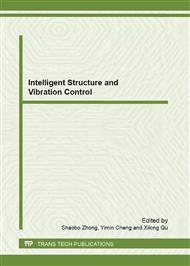p.78
p.83
p.89
p.93
p.100
p.105
p.110
p.115
p.120
Study on the Effects of Train Live Loads on Isolated and Non-Isolated Simply Supported Railway Bridges
Abstract:
In this paper, based on the finite element program ANSYS, the model of a simply supported railway bridge with and without isolation using lead rubber bearing is established. Seismic response time-history analyses of the bridge subjected to high-level earthquakes are carried out considering and not considering train live loads. Through the comparison and analyses of the results, the effects of train live loads on seismic calculation of non-isolated railway bridges and isolated railway bridges are obtained. The results of the research will support the further study on seismic design and isolation design of simply supported railway bridges.
Info:
Periodical:
Pages:
100-104
Citation:
Online since:
February 2011
Authors:
Price:
Сopyright:
© 2011 Trans Tech Publications Ltd. All Rights Reserved
Share:
Citation:


